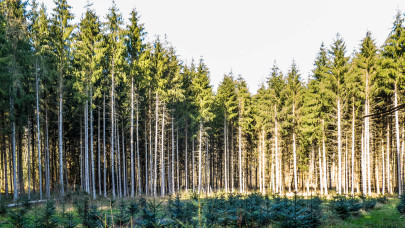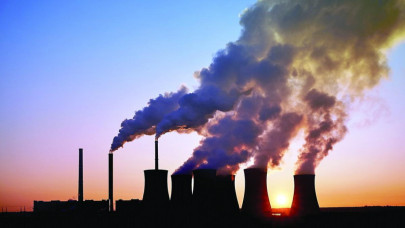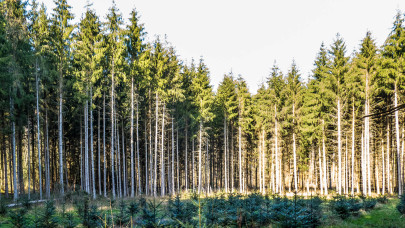Finally, new measures also propose to reduce food and textile waste, which will contribute to more efficient use of natural resources and a further reduction of greenhouse gas emissions from these sectors.
”Almost two years ago, we presented Fit for 55 to implement the climate pillar of the Green Deal. Today, we complement our earlier proposals on nature restoration and the reduction of chemical pesticides, to underpin the nature pillar of the Green Deal. These proposals are closely linked to each other and to the need for climate action: healthy soils absorb more carbon, retain more water and protect from droughts. And by enabling the safe use of new genomic techniques, farmers will have access to more resilient crops that require fewer pesticides”, says Frans Timmermans, Executive Vice-President for the European Green Deal.
These measures will bring long-term economic, social, health, and environmental benefits to everyone. By ensuring more resilient natural assets, the new rules in particular support people living directly from land and nature. They will contribute to prosperous rural areas, food security, a resilient and thriving economy, put the EU at the forefront of innovation and development and help reverse biodiversity loss and prepare for the consequences of climate change.
60 to 70% of soils in the EU are currently unhealthy. In addition, a billion tonnes of soil are washed away every year due to erosion, which means that the remaining fertile top layer is disappearing quickly. Costs associated with soil degradation are estimated at over €50 billion per year.
The proposal for the first-ever EU legislation on soils provides a harmonized definition of soil health, puts in place a comprehensive and coherent monitoring framework, and fosters sustainable soil management and remediation of contaminated sites. The proposal brings several sources of soil data under one roof, combining soil sampling data from the EU's Land Use and Coverage Area Frame Survey (LUCAS) with satellite data from Copernicus, and national and private data.
The ultimate goal is to achieve healthy EU soils by 2050, in line with the EU Zero Pollution ambition.
”Innovation is part and parcel of our Green Deal sustainability agenda, particularly in food. We want to give our farmers the tools to produce healthy and safe food, adapted to our changing climatic conditions, and with respect for our planet. This includes new rules on using new genomic techniques and modernized rules on plants and forest seeds to boost diversity, sustainable practices, and food security and drive EU competitiveness. We are also today stepping up our action against food waste to minimize food losses and reinforce our food security. We have an opportunity now to plan for the future, redesign how we produce and consume our food, and offer our citizens a larger choice of safe, sustainable, and nutritious products. This is also an opportunity for the EU farming sector and the food industry to take the lead on making sustainability their bankable trademark and stay ahead of the curve globally”, says Stella Kyriakides, Commissioner for Health and Food Safety.
Soil data will support innovation, technological and organizational solutions, notably in farming practices. It will help farmers and other landowners implement the most appropriate treatment methods and help them increase soil fertility and yields while minimizing water and nutrient consumption. In addition, this data will improve the understanding of trends in droughts, water retention, and erosion, strengthening disaster prevention and management.
Healthy soils and better data provide additional income opportunities for farmers and land managers, who can be rewarded for carbon farming, receive payments for ecosystem services, or for increasing the value of healthy soils and food produced on them. The proposal does not impose any direct obligations on landowners and land managers including farmers.
Member States will define positive and negative practices for soil management. They will also define regeneration measures to bring degraded soils back to a healthy condition, based on national soil health assessments. These assessments will also inform other EU policies, such as LULUCF, CAP, and water management.
The proposal also requests that Member States address unacceptable risks for human health and the environment due to soil contamination, guided by the polluter pays principle. Member States will need to identify, investigate, assess, and clean up contaminated sites.
Farmers and breeders need access to state-of-the-art innovation. New technologies can help boost resilience for both agriculture and forested land and protect harvests from the effects of climate change, biodiversity loss, and environmental degradation. New Genomic Techniques (NGT) are innovative tools that help increase the sustainability and resilience of our food system. They allow the development of improved plant varieties that are climate resilient, pest resistant, that require fewer fertilizers and pesticides, and can ensure higher yields, helping to cut the use and risk of chemical pesticides in half, and reducing the EUs dependency on agricultural imports.
”Today we build the European Green Deal from the ground up! Literally. Our proposal, which will result in the first-ever European law on soils, will boost Europe's resilience and ensure a viable future for our farmers, landowners, and people. In a nutshell, it legally defines healthy soils and allows us to gather data on the state of soils, make sustainable soil management the norm, and very importantly help decontaminate polluted soils. Investing in our soils means putting the right foundation for everything else we build on”, says Virginijus Sinkevičius, Commissioner for Environment, Oceans and Fisheries.
In most cases, these new techniques lead to more targeted, precise, and faster changes than conventional techniques, while growing a crop that is the same as what could have been achieved with classic techniques like seed selection and crossbreeding.
The proposal will:
- establish two categories of plants obtained by NGTs: NGT plants comparable to naturally occurring or conventional plants, and NGT plants with more complex modifications;
- both categories will be subject to different requirements to reach the market taking into account their different characteristics and risk profiles. The plants from the first category will need to be notified. The plants from the second category will go through the more extensive process of the GMO directive;
- give incentives to steer the development of plants towards more sustainability;
- ensure transparency about all NGT plants on the EU market (for e.g., through labeling of seeds);
- offer robust monitoring of the economic, environmental, and social impacts of NGT products.
The European seed sector is the largest exporter in the global seed market (20% of the global market with an estimated value of €7-10 billion and 7,000 companies mostly SMEs). It is important that the legislation is up to speed with the evolution of science. This proposal will update and simplify the current rules, some of which are more than 50 years old.
The proposed Regulation on the production and marketing of plant and forest reproductive materials will increase the diversity and quality of seeds, cuttings, and other plant reproductive material (PRM). They will guarantee stable yields by future-proofing plant varieties through sustainability testing (e.g., disease resistance). Seeds will also be better adapted to the pressures of climate change and help preserve the genetic diversity of cultivated crops and contribute to ensuring food security. The proposal will cut red tape and increase the efficiency and efficacy of the registration and certification systems.
For the Forest reproductive materials, EC will help ensure that the right tree is planted at the right place so that forests are better adapted to climate change. Tree breeding allows for speeding up climate change adaptation of forests, thus ensuring their continued productivity in the future.
Nearly 59 million tonnes of food (131 kg/inhabitant) are wasted in the EU each year with estimated market value of €132 billion. Over half of food waste (53%) is generated by households, followed by the processing and manufacturing sector (20%). Fighting food waste is a triple win: it saves food for human consumption and thereby contributes to food security. It helps companies and consumers save money, and it lowers the environmental impact of food production and consumption.
To accelerate the EU's progress, the Commission proposes that, by 2030, Member States reduce food waste by 10%, in processing and manufacturing, and by 30% (per capita), jointly at retail and consumption (restaurants, food services, and households).
Textile waste also burdens limited natural resources. Around 78% of the textiles waste is not separately collected by consumers and ends up in mixed household waste, destined to be incinerated or landfilled.
The proposals will now be discussed by the European Parliament and the Council in the ordinary legislative procedure.
Today's package completes the previous proposals under the ‘natural resources' pillar of the Green Deal.
”These initiatives and their targets rely on solutions provided by nature as our best ally in the fight against climate change. To deliver on climate neutrality, in particular, to enhance carbon removals by natural sinks, deliver on the EU Climate Law and uphold the European Union's international commitments under both the Paris Agreement and the Kunming-Montreal Biodiversity Framework, we must urgently strengthen the resilience of natural ecosystems across the EU, increase their ability to help us adapt to climate change and maintain their productive capacity to ensure lasting food and material security”, according to the EC.













